- 1. Where to Begin Your Training
- 2. Training for a Half Marathon
- 2.1. How to Train
- 3. Training for a Marathon
- 3.1. How to Train
- 3.2. Strength Training
- 3.3. Training Your Mind
- 3.4. Taking Care of Your Body
- 4. What to Wear for a Marathon
- 4.1. What to Wear for Warm Weather
- 4.2. What to Wear for Cool Weather
- 4.3. What to Wear in Any Weather
- 5. Popular Marathons in the U.S.
- 6. Go the Extra Mile (or 26.2)
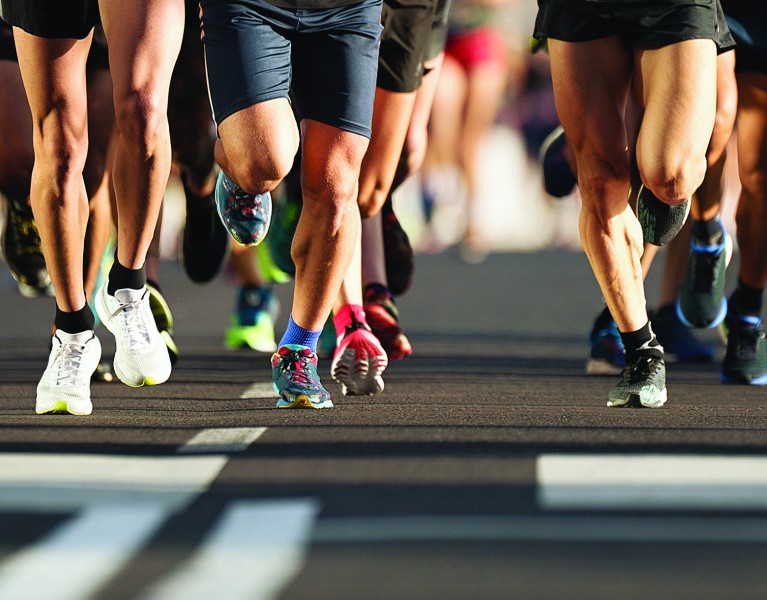
How to Train for a Marathon or Half Marathon
Table of Contents [Show]
Training for a marathon is no joke. Running 26.2 miles consecutively, especially in a race format, takes a lot of physical endurance and mental fortitude. For many, this is an incredibly rewarding feat. Running not only does wonders for your body physically, but it also releases endorphins to create the famous “running high” and boost your mental well-being. Running also calms and clears the mind, which can add many benefits to our everyday lives.
Whether you're an experienced runner looking to take the next step by entering a marathon, or a complete beginner, here’s how you can get started:
Where to Begin Your Training
When thinking about training for a marathon, it’s important to start slow, especially if you’re new to running. Many people want to push themselves to the limit and run as far as they can, as fast as they can. In most cases, this only causes unnecessary damage to the body. Taking it slow will help your muscles and joints acclimate to running long distances. Expect to train for a full year before your marathon if you’re a beginner, or six months if you have some experience with running.
If you’ve never run before, it’s advisable to start with training for a half marathon (13.1 miles), so that your legs adapt and you get a feel for what a marathon looks and feels like. As you become a more confident runner, then it will be time to tackle the full marathon.
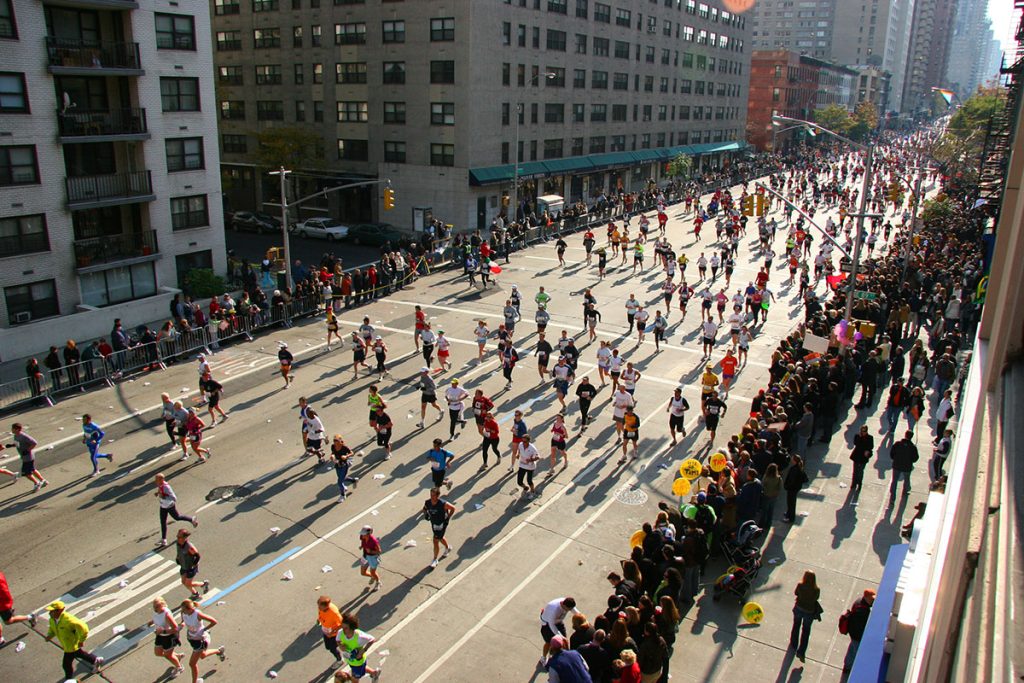
Training for a Half Marathon
Ideally, it’s nice to have a full year of training before your race, but a minimum of four months will suffice. If you are a beginner, start with jogging (not running) and jog what your body can handle. This will give you an idea of how you are feeling physically and what you need to improve. Remember to start with what you are capable of without overdoing it. The key is getting started and keeping up with your training.
How to Train
Your training should begin with running three times a week and no more than three miles each day, continuing for one month. Remember that it is little by little so that your legs become acclimated.
By the second month, add one more day of running and increase the miles. Either add one or two more miles to each day, or continue to run three miles three of the days and double that to six miles on the fourth day. Keep a steady pace and don’t worry about speed. You are building endurance.
One key factor to remember is to not overtrain. You may feel ready to run longer and faster, but it’s a good idea to keep a steady pace that allows your body to gradually acclimate. For example, if you add an extra mile to each jog you take for one week, go back to your original plan the following week, and then the week after add those miles back in.
For the following months, add another day of running, with a focus on speed. You will also want to increase your miles of running. Try speed training on an athletic track, in a park, or on any flat paved surface. When you are speed training, warm up with a 10 minute jog, run a quarter mile at full speed for four sets, resting for two minutes between each set.

Training for a Marathon
To run a marathon you need at least 6 months of training before the event, although one year is ideal, especially if you are new to running. Be very clear about your motivation to run this marathon and use it in your training.
How to Train
For the first two months, train as you would for a half marathon. In the third month, you’ll feel used to running longer distances, so you will want to add more miles to your routine. By this time, your training should include running three days, three miles each day. Add a fourth day to your training and double your miles to 6 for this run.
By the fourth month, your physical and mental condition should be improved and you should be feeling lighter. Now it’s time to add in some speed training. To run speed it is important to warm up well before. Jog for 10 minutes and then start to run at full speed for .25 mile for four sessions, resting two minutes between each session.
By month five you should be running five days a week while increasing your distance each day and adding a distance day. Your routine should also include one day of strength training and one day of speed training.
An example routine might consist of three days running three miles each day, with one of those days doing a 30-minute strength training after your run. On speed day, run and then do speed training on a track. On the distance day, you’ll aim to run 10 miles. Think about it, after five months you could be running over 20 miles in one week! That’s awesome!
If you plan on training for a year, you will be at your halfway point. By month six, you will feel physically ready to increase the miles. Run four to five miles three times a week and continue with strength and speed training. On distance day, increase to 12 or 13 miles (half-marathon length!). Take advantage of your distance days, these are some of the most important days that will help you prepare for the marathon. Your lungs will be improving, along with your endurance. Pro-tip for long run days: Keep energy-filled bars or nuts in your pockets during these runs to keep you fueled.
Remember to always warm-up before each run, stretch for at least 10 minutes after each run, eat properly, and rest on your days off.
For more specific, week-by-week training plans, check out popular plans:
- Hal Higdon's Novice 1 Marathon Training Program
- Jeff Galloway Marathon Training Program
- Furman FIRST Marathon Training Program
Strength Training
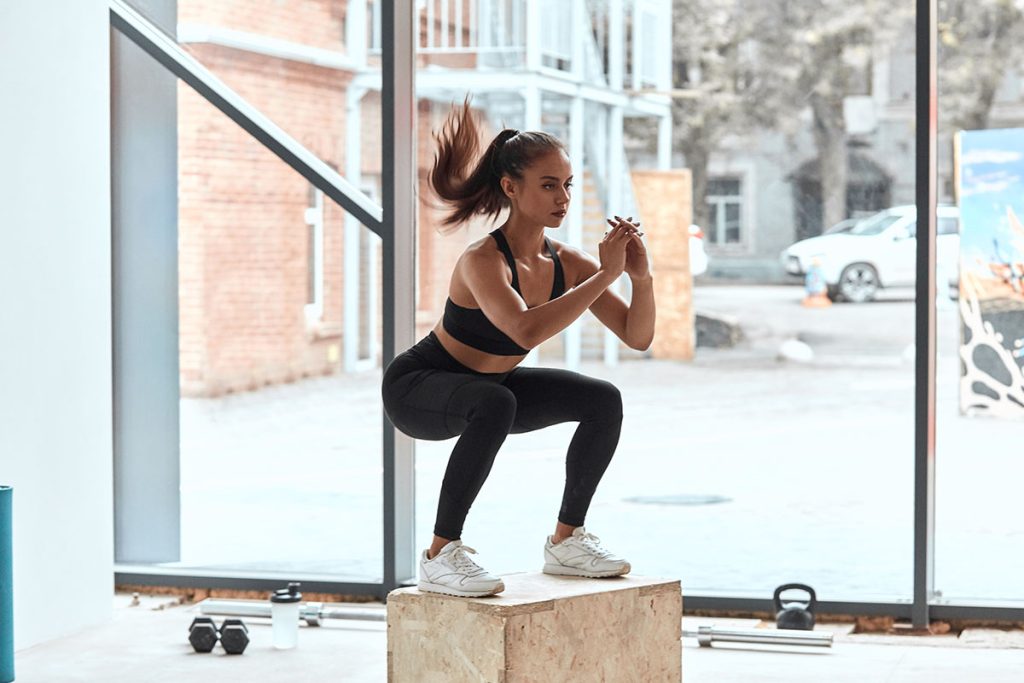
While endurance training is key to marathon racing, strength training will maximize your performance, especially if your race includes steep inclines. Your fitness and explosive ability will be enhanced when you incorporate strength training into your routine. Examples of marathon-specific strength training include:
Squats. With your feet shoulder-length apart, squat down pushing your knees down and your butt back into an invisible chair. Keep looking straight ahead. Repeat 10-12 times.
Speed Skaters. Start by stepping your right leg behind your left leg so your legs are crossed. Laterally jump and transfer your weight to your other foot, crossing your left behind your right. Repeat 20 times.
Long Jumps. With your feet shoulder-length apart, squat down and jump forward, using your arms to propel yourself further. Repeat 10 times.
Lunges. Step forward with one leg, lowering your hips until both knees are bent at about 90 degrees. Repeat with the other leg. Repeat 10 reps.
Side Shuffles. Squat down and shuffle in a controlled motion to one side for 10 steps. Repeat on the other side. Add resistance bands for increased strength training.
Training Your Mind
Since your body will be doing a lot of training over the course of several months, it’s also important to train your mind. Many people self-sabotage their progress and get caught up in mind games. You may want to give up at times and many emotions and negative thoughts might come out. Practicing meditation each morning and night will help your mind tune out and tone down negative thoughts. Find enjoyment in each training and remember why you started in the first place. Prepare a playlist for your big day by choosing your favorite motivational music. Ask your family for their favorite songs, so when you’re running you think of them as you motivate yourself to continue.
Taking Care of Your Body
Stretching and warming up your body is essential every time you run. Take time to warm up with simple movements like ankle circles, slowly raising your knees up towards your stomach, and shaking your body. Stretch or practice yoga after each session to help prevent injury.
Not only is moving your body necessary, but your days off are equally important. Resting truly means resting. No running, no strength training, no lifting heavy objects. It’s a time to relax and rejuvenate, simply doing what your body needs to recover.
Good nutrition is also a big part of your growth as a successful marathon runner. More carbohydrates, vegetables, fruits, healthy fats, whole grains, and lean proteins will guide you towards sustainable energy for your training. Of course, quitting alcohol and smoking will help you feel better and finish stronger. On the day of the race, eat what you normally eat for breakfast so you don't have digestive problems. Take a bar, mixed nuts or gel that will give you extra energy. You’ll also want to drink plenty of water with added electrolytes.
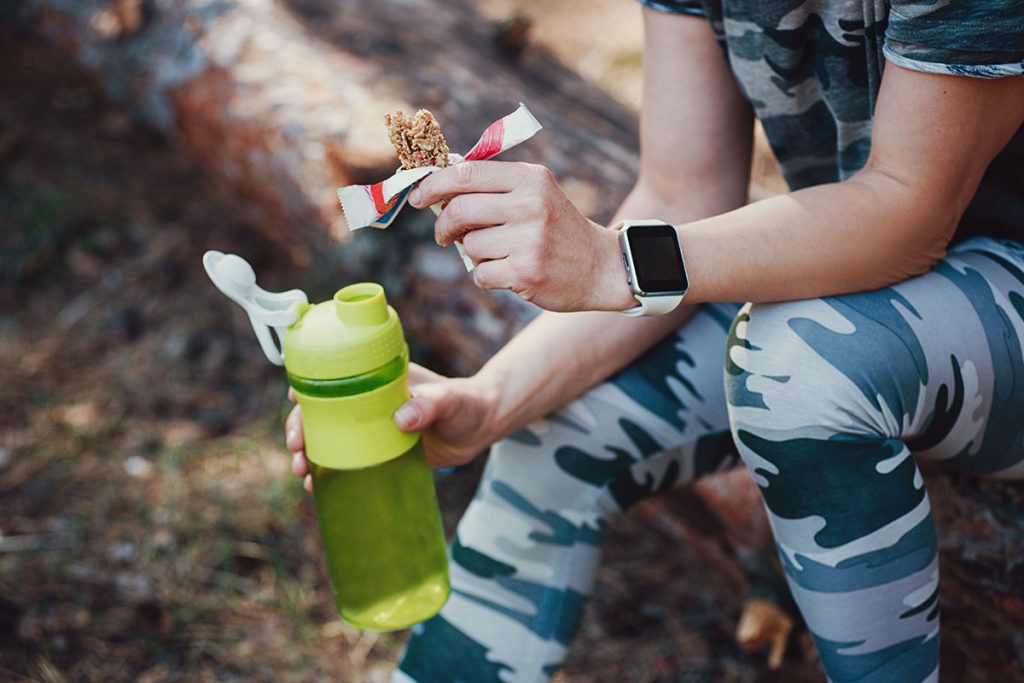
What to Wear for a Marathon
Since marathons are all about running, the most important item you will need is a pair of good quality, well-fitting running shoes. These should be shoes you have been training in and are comfortable wearing. Depending on the weather, there are a few different items you may want to think about when it comes to appropriate marathon attire:
What to Wear for Warm Weather
Running hat. A running hat is specifically designed to wick away sweat as well as protect you from the sun.
Tank top or t-shirt. This should be lightweight and moisture-wicking.
Shorts with pockets. These should also be lightweight, fit well, and not rub in the wrong places. The pockets should be able to hold a phone or snacks without bouncing.
Socks. These should be thin, well-ventilated, and anti-blister!
What to Wear for Cool Weather
Beanie or ear warmers. Choose something that is well-fitting and moisture-wicking. You don’t want your head to overheat and get sweaty while running.
Long-sleeve shirt. While keeping you protected from cooler weather, it should still be lightweight and moisture-wicking.
Mittens or gloves. These may not be necessary unless it is really cold. Wear lighter-weight, inexpensive ones, just in case it warms up during the race and you want to toss them on the side of the road.
Tight-fitting pants. These need to keep you mobile but also offer warmth without overheating. You could also choose to wear running tights underneath your shorts. If it’s really cold, opt for fleece-lined running leggings.
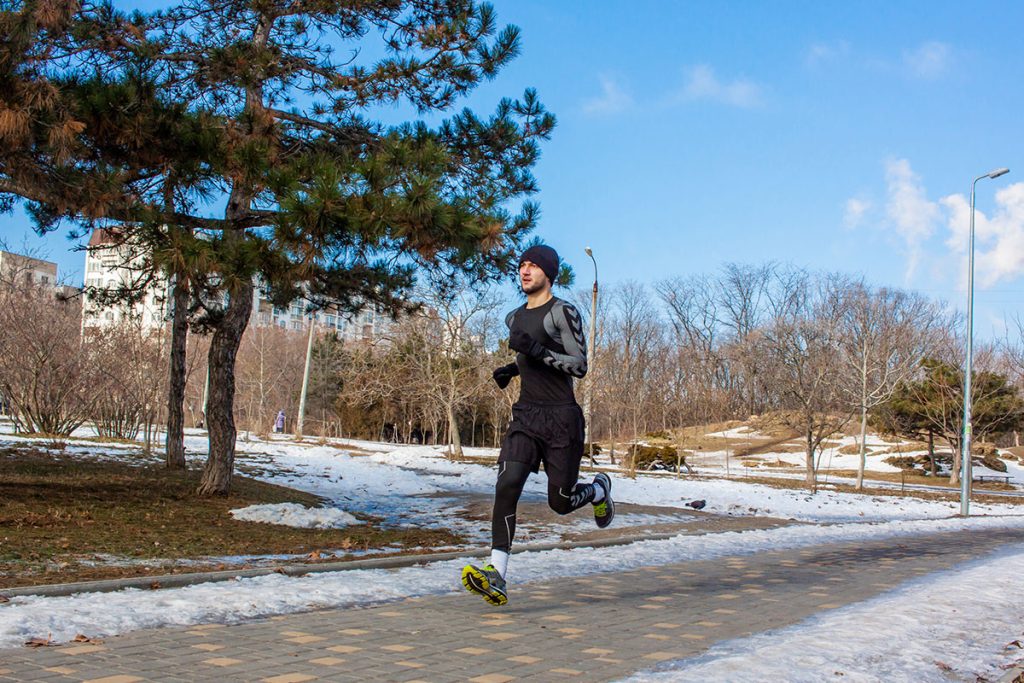
What to Wear in Any Weather
Whether it is warm or cold, there are certain items you will want to have with or on you for race day.
Sun protection. You will be out in the elements for more than four hours, so don't forget a hat and a pair of good sunglasses. Find glasses that won’t fog up or fall off while running. Don’t forget sunscreen!
Skin protection. Women should wear a supportive, well-fitting sports bra. Men also need to take care of their chests during a marathon. Nipple chafing is an all-too-common and painful occurrence for men who run long distances. A product like Nipeaze can really help. Make sure you wear underwear that won’t chafe; this is vitally important if you don’t want to finish out the race feeling burning pain in all the wrong places!
Popular Marathons in the U.S.
- Walt Disney World Marathon, Orlando, FL (January)
- L.A. Marathon, Los Angeles, CA (March)
- Boston Marathon, Boston, MA (April)
- Grandma’s Marathon, Duluth, MN (June)
- San Francisco Marathon, San Francisco, CA (July)
- Crater Lake Marathon, Crater Lake National Park, OR (August)
- Portland Marathon, Portland, OR (October)
- Medtronic Twin Cities Marathon, Minneapolis, MN (October)
- New York City Marathon, New York, New York (November)
- Honolulu Marathon, Honolulu, HI (December)
Go the Extra Mile (or 26.2)
Training for a marathon, as well as participating in one, is a grand test of the human spirit. Take the time to properly train, fuel your body with the right nutrition, and don’t forget to rest. Grab your favorite pair of running shoes and get started on your new 26.2-mile journey!
Featured image by: pavel1964.


